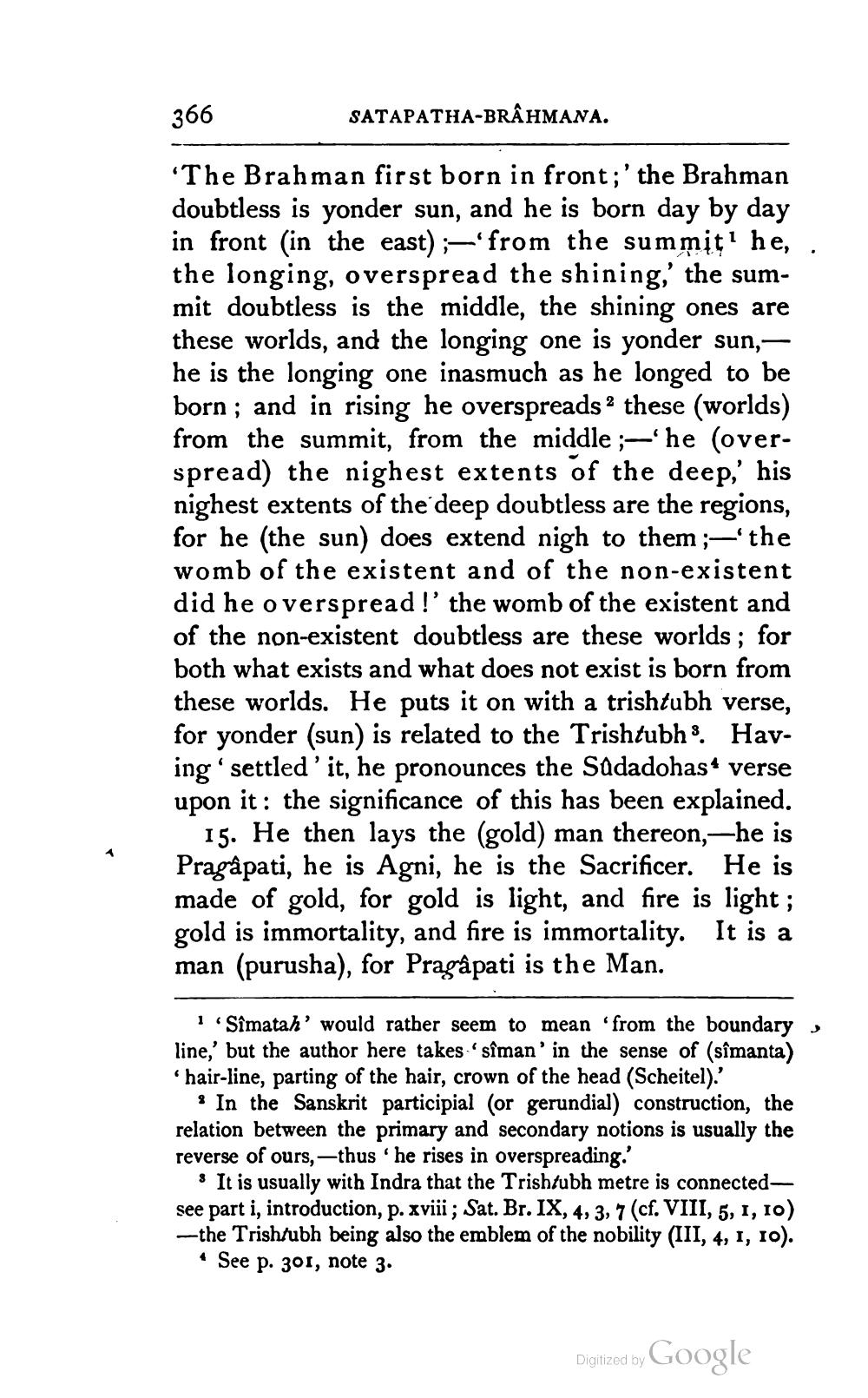________________
366
SATAPATHA-BRAHMANA.
"The Brahman first born in front;' the Brahman doubtless is yonder sun, and he is born day by day in front in the east) ;-'from the summit' he,. the longing, overspread the shining,' the summit doubtless is the middle, the shining ones are these worlds, and the longing one is yonder sun, - he is the longing one inasmuch as he longed to be born ; and in rising he overspreads ? these (worlds) from the summit, from the middle ;-'he (overspread) the nighest extents of the deep,' his nighest extents of the deep doubtless are the regions, for he (the sun) does extend nigh to them ;-'the womb of the existent and of the non-existent did he overspread !' the womb of the existent and of the non-existent doubtless are these worlds ; for both what exists and what does not exist is born from these worlds. He puts it on with a trishtubh verse, for yonder (sun) is related to the Trishtubh S. Having' settled ' it, he pronounces the Sadadohast verse upon it: the significance of this has been explained.
15. He then lays the (gold) man thereon,-he is Pragâpati, he is Agni, he is the Sacrificer. He is made of gold, for gold is light, and fire is light; gold is immortality, and fire is immortality. It is a man (purusha), for Prągâpati is the Man.
1 Sîmatah' would rather seem to mean 'from the boundary line,' but the author here takes sîman' in the sense of (sîmanta) hair-line, parting of the hair, crown of the head (Scheitel).
: In the Sanskrit participial (or gerundial) construction, the relation between the primary and secondary notions is usually the reverse of ours,—thus 'he rises in overspreading
s It is usually with Indra that the Trishtubh metre is connected see part i, introduction, p. xviii; Sat. Br. IX, 4, 3, 7 (cf. VIII, 5, 1, 10) -the Trish/ubh being also the emblem of the nobility (III, 4, 1, 10).
• See p. 301, note 3.
Digitized by Google




